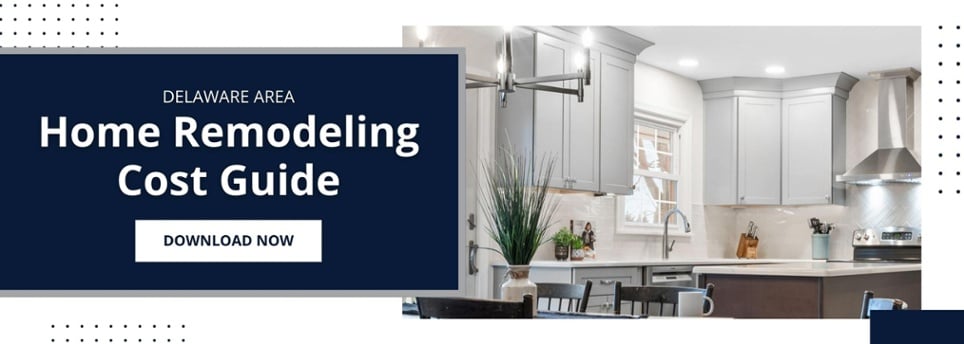How a New Roof Can Help Cut Energy Costs for Delaware Homeowners
There are several obvious benefits that come from replacing your roof. A new system strengthens the structural integrity of your home in Delaware while simultaneously improving the exterior façade and increasing the overall value. On top of that, a new roof can also make your home more energy efficient.
Over time, old and outdated roof systems start to break down and function less effectively. Additionally, manufacturers have developed new materials and methods that make modern roofs better at what they are designed to do: Keep out external elements and protect what’s on the inside. In the process, your new roof can also help you whittle down your monthly energy bills, which is always a plus for homeowners in Delaware.
Does a New Roof Increase Energy Efficiency?
There are a few important factors that contribute to the efficiency and durability of a roof, whether you plan to repair your existing system or completely replace it. These factors include insulation, ventilation, shingle color and radiant barrier.
To start with, adequate insulation in your attic extends the life of your roof and also translates into energy savings by reducing the amount of thermal transfer between your interior living spaces and the attic beneath your roof. When replacing your Delaware roof, take the opportunity to upgrade your insulation to boost the efficiency and durability of your roofing system and your home.
On the other hand, you also need proper ventilation to prevent excessive attic heat from causing problems, such as warping your roof decking and decreasing the useful life of your shingles. Additionally, when heat is trapped inside your attic, it can permeate the rest of your interior and cause the space to warm up like an oven, making your air conditioning system have to work overtime. During your reroofing project, your contractor can assess your existing intake and exhaust vents and whether they are supporting adequate airflow. If need be, the roofers will install additional vents or change their location to improve ventilation and help you control your home cooling costs.
Another key contributor to energy efficiency is shingle color. As with a black car, dark-toned roofs absorb more heat, which is then transferred to the roof deck and your attic. One solution is to choose lighter-colored shingles for your replacement roof. However, manufacturers such as Owens Corning have also created energy efficient shingles that are specifically designed to reflect away solar heat. That can decrease the surface temperature by up to 30%. Not only does solar reflection mitigate the problem of heat being absorbed by your shingles and then seeping into your home, but this feature also preserves the long-term health of the asphalt so it does not wear down as quickly.
Finally, a radiant heat barrier can also help your new roof cut down on your household’s energy costs. Once again, it has to do with your attic and the heat that is naturally stored there. Your roofing team can apply the radiant barrier during your roof repair or replacement, since they’ll need access to the sheathing, or the roof’s deck. This protective coating—which is applied to the underside of the roof deck—contributes to decreasing solar heat gain, which is good for your roof and your pocketbook.
What is the Most Energy Efficient Roof?
How well your replacement roof in Delaware functions also can vary based on the materials you use, because they have different energy efficient properties. For example, asphalt shingles—the most widely utilized material for residential roofing—are not inherently the most energy efficient option, but manufacturers have made strides to add characteristics that help. Additionally, how well your new roof is installed can also produce long-term effects to how it performs in this department.
By nature, concrete roofs and clay tile roofs are the most energy efficient choices based on their capacity to absorb and retain solar energy. These materials, when installed correctly, are also good at preventing air leaks, making it easier and less costly for you to control your home’s internal climate.
On the other end of the spectrum are aluminum and unpainted metal roofs. They absorb solar energy in large amounts, but, unfortunately, don’t release it. That means all the heat is retained and then transferred inside your house. It’s no fun trying to cool down that environment—and not good for your household expenses either.
Beyond the materials themselves, your roof design also influences the structure’s ability to reflect sunlight. Take cool roofs, for example, which are part of a comprehensive energy efficient home design. They utilize highly reflective tiles, shingles or paint to absorb less heat than a standard roof, but their efficiency is also due to the design and additional treatments you use.
No matter what type of roof you have on your home in Delaware or what type of roof you are replacing it with, you can make it a cool roof by retrofitting the system with additional reflective layers. The benefits of doing so include decreasing your AC needs and your energy bills; improving interior comfort; extending your roof’s serviceable life; and augmenting the value of your house.
Installing Your Energy Efficient Roof in Delaware
Behind all the materials and roofing methods you can apply, the way in which your replacement roof is installed will either undermine or enhance its function. No matter how many green solutions and technologies you select, if they’re not implemented properly, they won’t help your new roof lower your monthly energy consumption and utility bills. You need the assistance of an experienced and skilled roofing team to wind up with a quality roof that saves you money, and that’s what Bromwell Construction can provide. First, we have access to the right roofing material for your particular project. Add to that our expert craftsmanship, and you can rest assured that you will get the most from your upcoming roof repair or replacement.
